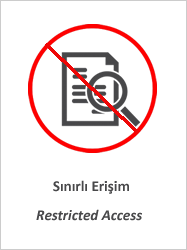Investigation of the Effect of Process Parameters and Geometry-Related Variations on Residual Stress for Aluminum 7050 Alloy Produced via Laser Powder Bed Fusion
Künye
COŞKUN, Mert, Binnur SAĞBAŞ, Yağız AKYILDIZ & Ömür Can ODABAŞ. "Investigation of the Effect of Process Parameters and Geometry-Related Variations on Residual Stress for Aluminum 7050 Alloy Produced via Laser Powder Bed Fusion". Journal of Materials Engineering and Performance, (2024): 1-9.Özet
Laser powder bed fusion (L-PBF), one of the additive manufacturing methods, has gained an important
place in several fields like aviation, space biomedical, etc., due to its advantages, such as producing complex
shaped parts with high quality in shorter times. On the contrary, disadvantages such as high surface
roughness, low dimensional accuracy, problems in reproducibility, and residual stress may induce difficulties
during the production of the part or usage of the final product. To reduce the residual stress on the
parts manufactured by the L-PBF technique, methods such as optimizing geometry-related variations and
printing process parameters or applying post-processes can be implemented. This study applied different
process parameters and geometry-related variations to investigate the residual stress for aluminum 7050-
RAM2 (2% ceramic added) alloy prepared by L-PBF. Laser power, scanning speed, re-melting (double
scan) as the process parameters and dimensional variations of the sample (surface area), and different print
orientations (0°, 45°) as the geometry-related variations were examined. Minor differences in the process
parameters and geometry-related variations affected the residual stress significantly. Especially up-skin
scan parameters, build orientation, and size of the top surface area may entirely change the residual stress
characteristics.



















